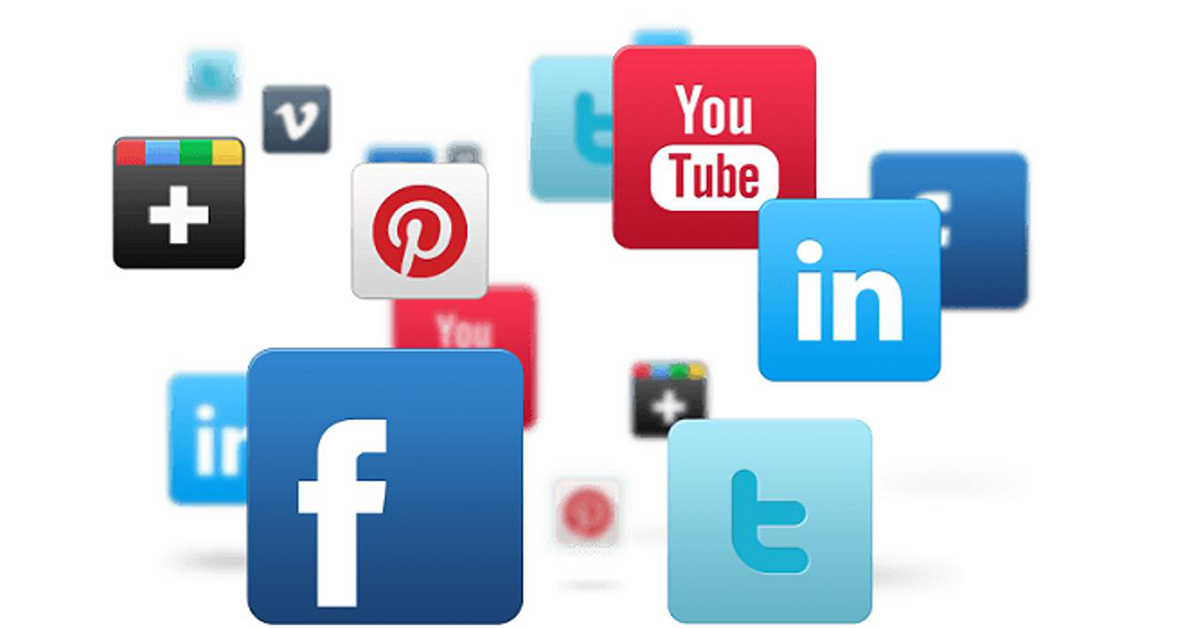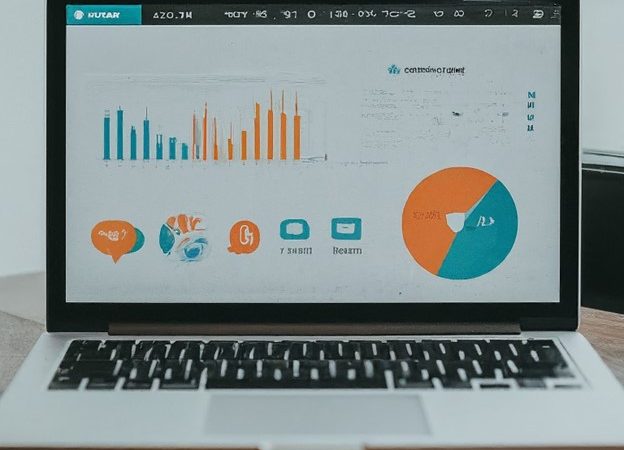Social media monitoring has become indispensable for businesses and individuals alike in the digital age. It involves tracking, analyzing, and responding to conversations about brands, products, or topics across social media platforms. This article explores the myriad benefits of social media monitoring, including its impact on reputation management, customer service, market research, competitive analysis, and
Social media monitoring has become indispensable for businesses and individuals alike in the digital age. It involves tracking, analyzing, and responding to conversations about brands, products, or topics across social media platforms. This article explores the myriad benefits of social media monitoring, including its impact on reputation management, customer service, market research, competitive analysis, and crisis management.
Introduction
In today’s interconnected world, social media serves as a powerful channel for communication, influence, and customer engagement. Social media monitoring allows individuals and businesses to listen actively to what their audience is saying, understand trends, and proactively manage their online presence. This article delves into how effective monitoring strategies can enhance brand perception, improve customer relationships, inform strategic decisions, and mitigate risks in the digital landscape.
Benefits of Social Media Monitoring
- Reputation Management: Social media monitoring enables businesses to track mentions, reviews, and sentiment surrounding their brand. By monitoring conversations in real-time, companies can swiftly address customer concerns, respond to feedback, and manage crises effectively. This proactive approach helps maintain a positive brand image and build trust among stakeholders.
- Customer Insights and Market Research: Monitoring social media platforms provides valuable insights into customer preferences, behaviors, and trends. By analyzing discussions, comments, and reviews, businesses can identify emerging trends, assess customer sentiment towards products or services, and uncover unmet needs. These insights inform product development, marketing strategies, and customer service improvements.
- Competitive Analysis: Social media monitoring allows businesses to monitor competitors’ activities, campaigns, and customer feedback. By benchmarking against industry peers, companies can identify competitive strengths and weaknesses, capitalize on market gaps, and differentiate their offerings. This intelligence aids in strategic decision-making and maintaining a competitive edge.
- Enhanced Customer Service: Monitoring social media platforms enables businesses to provide timely and personalized customer support. By addressing queries, complaints, and issues in real-time, companies can improve customer satisfaction, foster loyalty, and turn detractors into advocates. Social media serves as a direct communication channel, allowing for transparent and responsive interactions with customers.
- Crisis Detection and Management: Social media monitoring acts as an early warning system for potential crises or reputation threats. By detecting negative sentiment, viral content, or misinformation early on, businesses can intervene promptly, mitigate damage, and safeguard brand integrity. Effective crisis management strategies, informed by social media insights, enable companies to navigate challenging situations proactively.
Strategies for Effective Social Media Monitoring
- Set Clear Objectives: Define goals such as reputation management, customer service improvement, or competitive analysis. Tailor monitoring efforts to align with business objectives and KPIs.
- Select the Right Tools: Utilize social media monitoring tools such as Hootsuite, Sprout Social, or Mention to track mentions, keywords, and sentiment across platforms. Choose tools that offer comprehensive analytics and reporting functionalities.
- Monitor Key Metrics: Track metrics such as sentiment analysis, engagement rates, reach, and share of voice to gauge campaign effectiveness and brand perception. Analyze trends over time to identify patterns and opportunities.
- Engage with Your Audience: Actively participate in conversations, respond to feedback, and engage with followers to build rapport and strengthen relationships. Use social listening to understand customer needs and preferences.
- Integrate with CRM Systems: Integrate social media monitoring data with Customer Relationship Management (CRM) systems to streamline lead management, track customer interactions, and personalize marketing efforts.
Leveraging Influencer Insights
Social media monitoring enables businesses to identify and collaborate with influencers who resonate with their target audience. By tracking influencer mentions, engagement rates, and audience demographics, companies can forge authentic partnerships that amplify brand reach and credibility. Influencer insights derived from monitoring tools help businesses identify potential brand advocates, optimize influencer campaigns, and measure their impact on brand perception and lead generation.
Crisis Prevention and Mitigation Strategies
Proactively monitoring social media allows businesses to detect potential crises before they escalate. By monitoring keywords, brand mentions, and sentiment trends, companies can identify emerging issues, negative feedback, or misinformation circulating online. Prompt intervention and transparent communication can mitigate reputational damage, build trust among stakeholders, and turn crises into opportunities for demonstrating responsiveness and commitment to customer satisfaction.
Enhancing Product and Service Development
Social media monitoring provides valuable feedback on product or service experiences shared by customers in real-time. By analyzing reviews, comments, and sentiment trends, businesses gain actionable insights into customer preferences, pain points, and suggestions for improvement. This customer-centric approach informs product development cycles, enhances service offerings, and fosters innovation aligned with market demands, ultimately driving customer loyalty and retention.

Image by:https://www.gravyforthebrain.com/
Tracking Industry Trends and Competitive Intelligence
Monitoring industry-related conversations on social media enables businesses to stay informed about market trends, competitor strategies, and emerging opportunities. By tracking keywords, industry hashtags, and competitor mentions, companies gain competitive intelligence that informs strategic decision-making and market positioning. Insights derived from monitoring tools help businesses adapt to market dynamics, capitalize on trends, and maintain a competitive edge in their industry.
Measuring Brand Sentiment and Perception
Social media monitoring tools facilitate sentiment analysis to gauge how audiences perceive a brand, product, or campaign. By tracking sentiment trends—positive, negative, or neutral—businesses gain actionable insights into public perception and brand sentiment shifts over time. This data-driven approach enables marketers to assess the effectiveness of marketing efforts, adjust messaging strategies, and nurture a positive brand reputation among target audiences.
Optimizing Marketing Campaigns and ROI
Analyzing social media metrics such as engagement rates, click-through rates (CTR), and conversion rates helps businesses optimize marketing campaigns for maximum ROI. By identifying high-performing content, audience segments, and campaign tactics through monitoring tools, marketers can allocate resources effectively, refine targeting strategies, and improve campaign effectiveness. This data-driven optimization ensures that marketing investments align with business objectives and deliver measurable results.
Competitive Analysis: Social Media Monitoring Tools
| Tool | Key Features | Pricing | Examples of Successful Users | Analysis |
| Hootsuite | Dashboard for monitoring multiple platforms; analytics | Freemium to paid plans | L’Oréal, Virgin, McDonald’s | Hootsuite offers comprehensive monitoring across platforms with robust analytics, suitable for large-scale brand management. |
| Sprout Social | Listening, engagement, and reporting tools | Paid plans | Hyatt, Subaru, Evernote | Sprout Social excels in customer engagement and reporting, ideal for mid-sized businesses focused on customer interaction. |
| Mention | Real-time monitoring; sentiment analysis | Paid plans | Microsoft, GitHub, Airbnb | Mention provides real-time alerts and sentiment analysis, suitable for businesses requiring immediate crisis management capabilities. |
Analysis Table: Comparison of Social Media Monitoring Tools
| Tool | Key Features | Pricing | Examples of Successful Users | Analysis |
| Hootsuite | Dashboard for monitoring multiple platforms; analytics | Freemium to paid plans | L’Oréal, Virgin, McDonald’s | Hootsuite offers comprehensive monitoring across platforms with robust analytics, suitable for large-scale brand management. |
| Sprout Social | Listening, engagement, and reporting tools | Paid plans | Hyatt, Subaru, Evernote | Sprout Social excels in customer engagement and reporting, ideal for mid-sized businesses focused on customer interaction. |
| Mention | Real-time monitoring; sentiment analysis | Paid plans | Microsoft, GitHub, Airbnb | Mention provides real-time alerts and sentiment analysis, suitable for businesses requiring immediate crisis management capabilities. |
| Brandwatch | Advanced analytics; consumer insights | Contact for pricing | Walmart, PepsiCo, Airbnb | Brandwatch offers advanced analytics and consumer insights, ideal for enterprises needing comprehensive social listening and competitive intelligence. |
| Buffer | Social media scheduling; analytics | Freemium to paid plans | Shopify, Trello, Help Scout | Buffer provides intuitive scheduling and basic analytics, suitable for small to medium-sized businesses managing social media presence efficiently. |
| Socialbakers | AI-powered insights; competitive benchmarking | Contact for pricing | Samsung, Nestlé, National Geographic | Socialbakers offers AI-driven insights and competitive benchmarking, suitable for global brands optimizing social media strategies and performance. |
Analysis
- Features and Functionality: Each tool offers unique features such as real-time monitoring, sentiment analysis, and engagement metrics, catering to diverse business needs from brand management to crisis response.
- User Base and Success Stories: Successful users like L’Oréal and Microsoft demonstrate the tools’ effectiveness in managing large-scale brand presence and crisis communications, leveraging real-time insights for strategic decision-making.
- Pricing and Scalability: Pricing structures vary from freemium to paid plans, accommodating businesses of different sizes and budgets. Tools like Hootsuite offer scalability for enterprise-level brand monitoring, while Mention provides agility in crisis situations with its immediate alert capabilities.
- Integration and Data Security: Considerations include integration capabilities with existing CRM systems, data privacy compliance, and scalability to meet growing monitoring needs as businesses expand their digital footprint.
- Customer Support and Training: Evaluate support options such as customer service availability, training resources, and user communities to ensure effective tool implementation and ongoing support for monitoring initiatives.
- ROI and Effectiveness: Measure ROI based on improved brand perception, enhanced customer relationships, crisis mitigation, and competitive advantage gained through informed decision-making and proactive engagement.
Conclusion
In conclusion, social media monitoring is a critical component of modern digital marketing and business strategy. It empowers organizations to understand and engage with their audiences, manage their reputation effectively, and stay ahead of industry trends. By leveraging the insights gained from monitoring social media conversations, businesses can make informed decisions that enhance customer satisfaction, drive innovation, and maintain a competitive edge.
The benefits of social media monitoring extend beyond simple brand tracking. It facilitates proactive crisis management, enabling companies to address issues before they escalate, thereby safeguarding their reputation and customer trust. Moreover, by integrating monitoring tools with CRM systems, businesses can create a seamless flow of information that enhances customer relationship management and personalization efforts.
As the digital landscape continues to evolve, the tools and techniques for social media monitoring are becoming increasingly sophisticated. Advanced features such as sentiment analysis, real-time alerts, and AI-powered insights are transforming how companies gather and utilize data. This evolution underscores the importance of choosing the right tools and strategies to align with business objectives and maximize ROI.
Ultimately, the successful implementation of social media monitoring requires a strategic approach, combining the right technology with actionable insights and a commitment to continuous improvement. By doing so, businesses can not only respond effectively to current challenges but also anticipate future opportunities, driving sustained growth and success in an increasingly competitive marketplace. Embracing social media monitoring is not just about keeping up with trends; it’s about staying ahead of them.
















